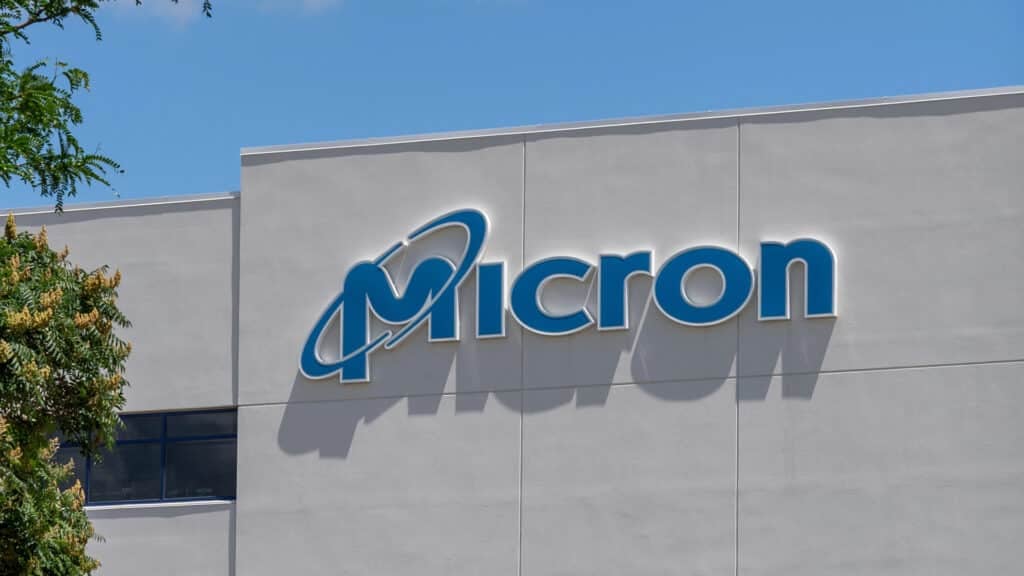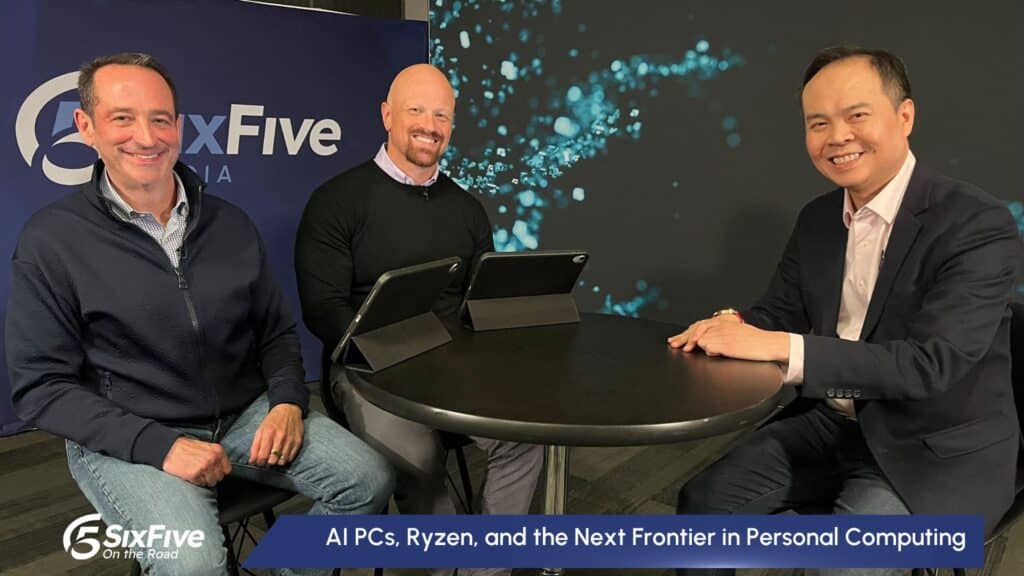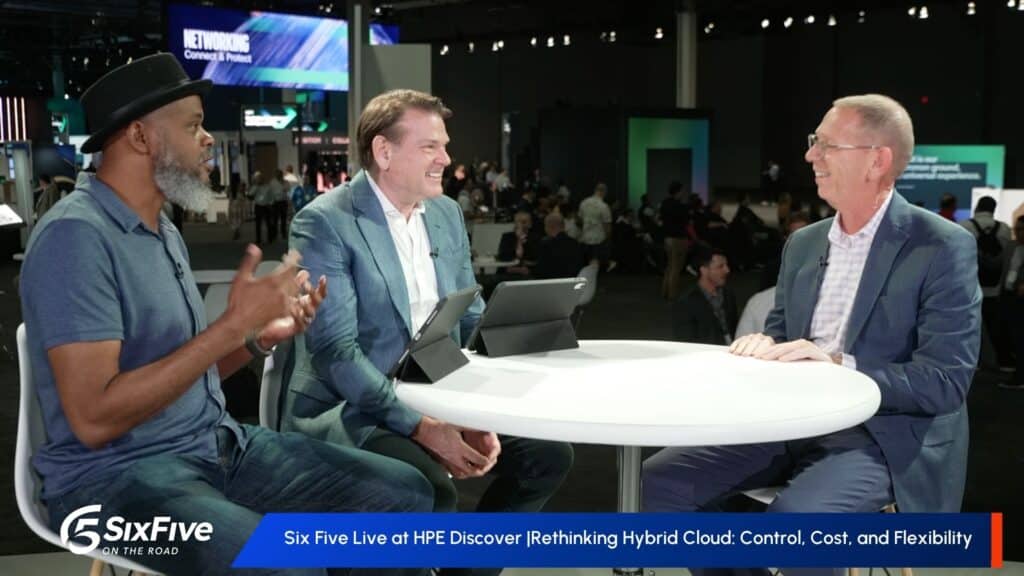The Six Five team discusses Microsoft Bing Search and Sales Copilot AIM.
If you are interested in watching the full episode you can check it out here.
Disclaimer: The Six Five Webcast is for information and entertainment purposes only. Over the course of this webcast, we may talk about companies that are publicly traded and we may even reference that fact and their equity share price, but please do not take anything that we say as a recommendation about what you should do with your investment dollars. We are not investment advisors and we ask that you do not treat us as such.
Transcript:
Pat Moorhead: Since November, we can’t have an episode without talking about AI. And Microsoft came out with a GA for one product and I believe introduced another. Why don’t you dive into that?
Daniel Newman: Yeah. So I’ll talk a little bit about Sales Copilot and AIM, and it’s two different things. It was a bad Chiron by me, but it’s two different things for those of you that are looking at the pod. Or is it Chiron?
Pat Moorhead: I have no idea. It’s Chicago, not Chicago.
Daniel Newman: Chicago? It’s Chicago?
Pat Moorhead: Yeah.
Daniel Newman: All right, just checking. So if you haven’t been following what Microsoft is doing, what it’s done since its investment in OpenAI has been layering in generative capabilities across its entire business portfolio. There seems to be an announcement almost every week, Pat. It goes from Dynamics over to Teams, to Windows, and M 365 and Office. Well, at this week at Inspire, the company zeroed in on its sales, its Copilot, which is part of its Dynamics 365 and CRM solution. And really it’s a set of tools that sits on top of, so just for background, the Copilot, basically it sits across the suite of productivity and collaboration apps.
The idea is this is the generative capability, automate tasks, create content, being able to analyze data, design PowerPoints. Some of you have probably seen this, I’m dying to try it. I want to build a PowerPoint in two minutes and then I want to fire myself, Pat, my goal is to replace myself. You hear this?
Pat Moorhead: It’s another one. I mean, whether it’s videos, whether it’s presentations, research reports.
Daniel Newman: And they’re coming to something like $30 a month per user for all this, seems like it could work, but it’s not yet broadly available. So about 600 global enterprise customers are able to use this, but basically what the Sales Copilot is and what they’re really focusing in on now is, how do you improve that end-to-end sales experience in CRM? Generating follow-up emails, creating initial introductions, putting that into the system, being able to use customization and text, being able to blend private enterprise data with public Large Language Models to create more compelling real-time presentations that can be used on PowerPoint in sales, being able to put together a price quote and do these things in an almost automated way.
And you start to see the way this integrates, you start to see, “Oh, a Teams meeting. I talked to a customer in that meeting, we talked about what the proposal would be.” Being able to extract that and then instantly drop it into the Dynamics 365 Sales Copilot, Sales Copilot then creates a PowerPoint presentation with the proposal, creates a written proposal, drops it into the CRM, puts it into a different stage depending on where it’s been delivered. And then out it goes, trackable, automatic updates, you can schedule follow-on emails to come out of this thing. That’s what they’re really doing with Sales Copilot.
And it’s a pretty compelling set of capabilities and tools that every company on the planet is going to want. They’re doing a similar service copilot, which can do things like automating chatbots, sending messages back and forth, being able to answer questions, tapping into ERP and CRM to be able to get real-time data. “Where’s my delivery? Well, where’s my service ticket? I need a technical support agent. My product’s not working.” Things like that. So you’re seeing it in sales, you’re seeing it in service. This is a big focus for Microsoft right now.
And now, having said that, I’m going to be really clear. This is a big focus of every company that’s doing CRM and ERP solutions. If it’s CX companies like Zendesk, if it’s Salesforce, their CRM and service cloud, they launched a fairly significant AI capability. If it’s going to be, you’re going to see some of this in business AI, we talked about SAP, you’re going to see some of this in NetSuite and in the tools in Oracle. But really the question isn’t going to be if a company does this, the expectation is every technology company that has an enterprise software suite is going to do this.
The question is, one is for each company it’s about A, protecting your moat, meaning having it be the customers you have, feel that the AI tools that are being made available are going to be good enough that you don’t need to consider a different AI tool and to take your business elsewhere. The second thing is then going to be, it’s going to be competing on the quality, Pat. We saw Google also in workspaces introduced their generative AI capabilities to do PowerPoints, to do sales proposals.
Now, Google doesn’t have a CRM per se, but you could start to see how, well, Salesforce doesn’t really have an office unless you consider Quip that, and I would say it’s not. But all of a sudden you see, well, could a Salesforce and Google pair up to do something that looks a lot like what Microsoft’s doing? So that’s kind of going to be the interesting thing to watch is there’s going to be the debate on how that all comes together.
I’m going to quickly talk here about AIM, because the company also did come up with what’s called Accelerate, Innovate, Move. It’s a new program that the company put out to help businesses get into the cloud. And the reason they’re doing that is because until companies move into the cloud, they can’t take advantage of the Dynamics 365 Copilot. So AIM is a migration tool and it’s not just a tool, it’s a tool and set of services capabilities that helps people move more quickly from prem or from traditional dynamics solutions into the cloud.
And so all the Copilot capabilities, just to be quick, are required that you’re running in the cloud. So seeing customers move from prem to cloud so they can gain access to these features is going to be something that’s important. So this is kind of a new thing, Pat. My big hope and consideration is historically migration offerings from companies have felt like, “This is really hard so we’re building these programs and tools to make it easier.”
What I’m hoping Microsoft is really thinking about is, “Migration to our cloud is easier than others and we’re building a program to make it even easier.” And I’m saying this not cynically, but Pat, when you hear migration program, doesn’t it kind of just make the hair in the back of your neck standup? You’re like, “Ooh, that’s stressful.”
Pat Moorhead: Well, it’s high risk, it’s stressful, it takes incremental people, but I got to tell you, it’s just as much work to bring in a new package.
Daniel Newman: Yeah, absolutely.
Pat Moorhead: I mean, you and I have both been through that.
Daniel Newman: Yeah. So I’ll close this one out real quickly, Pat-
Pat Moorhead: Are you sure you don’t want to talk another 10 minutes, Dan?
Daniel Newman: No, let’s keep going. Let me talk about enterprise… No, I’m kidding. I want you to talk about enterprise search even though I want to, but I want to leave a little oxygen on this one.
Pat Moorhead: No, I appreciate it. Yeah, I wasn’t even briefed by Microsoft on Sales Copilot AIM, so I’m going to stick to what I was briefed on and I wrote a Forbes article along with Melody Brue. It’s up on forbes.com, you can check it out. But listen, this is another one of these, this capability had been announced previously and this one isn’t GA, this one is in preview. Now, like Daniel, I want this thing now, I want to start using it mistakes and all, but I did feel like it was important to pull some things out.
Initially, when Microsoft talked about these capabilities, they weren’t as clear as I thought they needed to be related to, we are going to use, if you want, enterprise data to make the experience better. And what I mean by better is accurate, because if you look at OpenAI, it’s the brain and it’s been tested on called world data, which is the public internet, and then Microsoft applies it its own filter to it mostly for security and recency called, I believe it’s called Andromeda.
And then what you do for enterprises is you do prompt engineering at scale, you’re not retraining the entire model. Again, that would cost a hundred million dollars. What you’re doing is you are putting en masse, and by the way, I think Salesforce does a great job explaining this, to be able to keep your data secure in a SaaS environment. And some of the new stuff that came out was that each one of the responses in the prompts when you go to Microsoft Bing search is it tells you the source of the data. It also tells you it’s internal data only, like you can see that. It’s not the first time Microsoft has done this. If you use Bing search many times like I do and you connect your Azure AD and your corporate, it will tell you, “You’re the only one to see this.”
Google does the same thing with workspace when you do a search and it’s sprinkles in your enterprise data if you’ve uploaded that. So I really, really do appreciate that because a system like this has to provide trust. And that’s trust, not just in the trust, is it giving me garbage back? Which is obviously important, but really having trust in where it came from. And as we like to say, sometimes trust and verify, labeling these links with results with where it pulled the data from will increase that trust over time.
Now, long term, I don’t know if you’re going to need that. Once people get trust, those links just might go away. Now, you still have to have that on the public, the consumer side, because you need to send links back to advertisers and stuff like that. But it is very, very smart in how they introduced this AI. When it does come to trust, I mean people trust Microsoft. If you’re using Office 365, if you’re using Microsoft 365, if you’re using Dynamics 365, you basically are entrusting Microsoft already with your data.
And yes, generative AI is a little bit different than machine learning and deep learning and analytics, but you are still exporting your data out there. The one nuance with generative AI is that it tries to improve itself over time. It’s this living organism, it’s this living brain. And Microsoft is very clear that it’s not going to use data that it trained off your corporate data to make the overall borg that’s available to everybody else smarter. And that’s going to take a while for enterprises to get comfortable with that.
Daniel, like you, give me this now, I want to take my Word documents and turn them into presentations. I want to take my PowerPoint and turn them into Word documents. Just give me that now, would you? Come on, Microsoft. I’m not an E5 licensee, but I sure would like to try this out. So check out the Forbes article from Melody and I.
Author Information
Daniel is the CEO of The Futurum Group. Living his life at the intersection of people and technology, Daniel works with the world’s largest technology brands exploring Digital Transformation and how it is influencing the enterprise.
From the leading edge of AI to global technology policy, Daniel makes the connections between business, people and tech that are required for companies to benefit most from their technology investments. Daniel is a top 5 globally ranked industry analyst and his ideas are regularly cited or shared in television appearances by CNBC, Bloomberg, Wall Street Journal and hundreds of other sites around the world.
A 7x Best-Selling Author including his most recent book “Human/Machine.” Daniel is also a Forbes and MarketWatch (Dow Jones) contributor.
An MBA and Former Graduate Adjunct Faculty, Daniel is an Austin Texas transplant after 40 years in Chicago. His speaking takes him around the world each year as he shares his vision of the role technology will play in our future.





